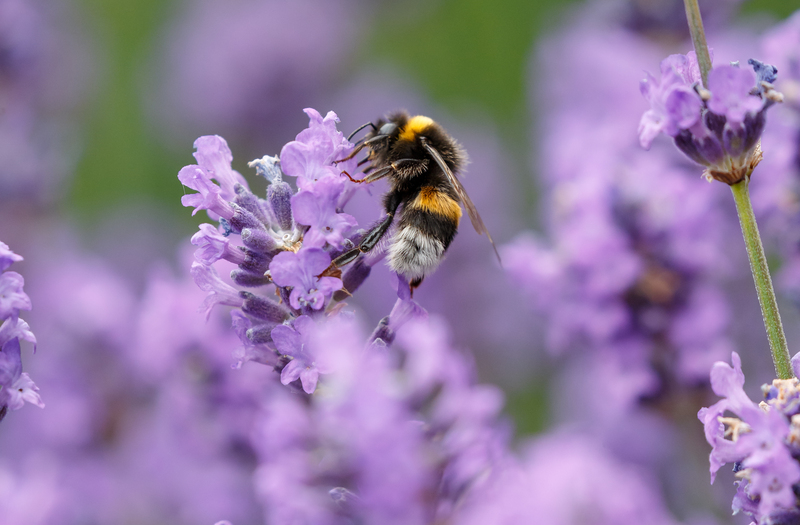Orchid Care Essentials for Beginners
Posted on 28/09/2025
Orchid Care Essentials for Beginners: A Complete Guide
Orchids are among the most stunning and fascinating plants you can welcome into your home. With their exotic beauty and diverse varieties, these enchanting blooms can transform any indoor space into a lush botanical haven. However, many new plant parents feel intimidated when it comes to orchid care. Fret not! This comprehensive, Google-friendly guide will walk you through essential orchid care tips for beginners, ensuring your beloved blooms thrive for years to come.

Why Choose Orchids? The Allure of This Exotic Flower
Orchids are renowned for their:
- Long-lasting blossoms: With proper care, orchid flowers can last from weeks to months.
- Unrivaled variety: There are more than 25,000 species worldwide, offering a vast array of shapes, sizes, and colors.
- Air-purifying qualities: Like many houseplants, orchids help filter toxins from the air.
- Symbolic value: Orchids often symbolize beauty, love, and refinement.
Despite their reputation for being fussy, most orchid varieties are remarkably resilient and adaptable if given the proper conditions. The secrets to easy orchid care start with a basic understanding of their unique needs.
Understanding Orchids: Types and Common Varieties for Beginners
Before jumping into orchid plant care, it's important to know which type of orchid you have. While there are thousands of species, a few varieties are especially beginner-friendly:
Phalaenopsis Orchids (Moth Orchids)
- The most popular orchid for beginners.
- Long-lasting, butterfly-shaped blooms.
- Tolerant of indoor conditions.
Dendrobium Orchids
- Compact, upright growth habit.
- Large, vibrant flowers on tall stems.
- Likes brighter light than Phalaenopsis.
Cattleya Orchids
- Known as the "Queen of Orchids."
- Large, fragrant, ruffled blooms.
- Prefer bright, indirect sunlight.
Identifying your orchid species is crucial, as care requirements (such as watering, light, and humidity) may differ slightly. However, most beginner orchids can thrive in similar indoor environments with just a few adjustments.
Orchid Care Basics: The Foundations Every Beginner Needs
1. The Right Pot and Potting Medium
Unlike most houseplants, orchids are epiphytes--they grow on trees and rocks rather than in soil. This means their roots need exceptional airflow and quick drainage.
- Use a specialized orchid potting mix, often made from bark, sphagnum moss, charcoal, or perlite.
- Avoid regular potting soil, which holds too much moisture and can cause root rot.
- Choose pots with drainage holes and slits, ensuring air reaches the roots.
- Clear plastic orchid pots let you monitor root health and moisture levels easily.
2. Light: The Goldilocks Principle
Light is one of the most crucial orchid care elements. While these plants love sunlight, direct sun can scorch their delicate leaves.
- Place orchids in bright, indirect light, such as an east- or west-facing windowsill.
- If sunlight is too harsh, use a sheer curtain to diffuse the rays.
- Leaf color is a useful indicator: Healthy leaves are light to medium green. Very dark leaves suggest too little light, while yellow or scorched leaves mean too much.
- Rotate the orchid occasionally for even growth.
3. The Art of Watering Orchids
Overwatering is the number one cause of droopy, distressed orchids. As a beginner, it's better to err on the side of caution.
- Water only when the orchid potting mix is nearly dry.
- Insert a finger about an inch into the mix--if it feels dry, it's time to water.
- Soak the roots thoroughly, ensuring water drains freely from the bottom (never let the pot sit in water).
- In most homes, water once every 7-10 days. Increase frequency during hot, dry spells and decrease in winter.
- Misting can help raise humidity but shouldn't replace proper watering.
Tip: Avoid using cold, chlorinated tap water. Room-temperature, filtered, or rain water is ideal for happy orchid roots.
4. Achieving the Perfect Humidity and Airflow
Orchids originate from humid, breezy rainforests. Recreate these conditions at home:
- Maintain humidity between 40-60%.
- Use a humidity tray (shallow tray filled with pebbles and water below the pot).
- Group plants together to naturally boost humidity.
- Ensure steady airflow: Open windows or use a low-speed fan, but avoid cold drafts directly on the plant.
5. Temperature Needs for Blooming Orchids
Most popular orchids thrive in daytime temperatures between 65-80?F (18-27?C) and slightly cooler nights.
- Nighttime temperature drops of about 10?F (5?C) can encourage blooming.
- Keep orchids away from hot radiators, air conditioners, and cold windowsills.
- Consistent temperatures prevent flower bud drop and leave stress.
6. Feeding Your Orchid: Fertilizer Facts
Orchids don't need much fertilizer, but occasional feeding keeps blooms healthy.
- Apply a balanced, water-soluble orchid fertilizer ("20-20-20") every 2-4 weeks.
- Mix at half the recommended strength to avoid roots burn.
- Feed orchids only during active growing (spring and summer) and reduce in winter.
- Flush the pot with water monthly to remove salt buildup.
Common Orchid Problems and How to Solve Them
Droopy Leaves or Wilting Blooms
- Possibly due to overwatering or root rot. Check roots; healthy ones are firm and green/white, while rotted roots are brown and mushy.
- Reduce watering and improve drainage.
Sticky Leaves or Cottony Patches
- May be caused by pests like mealybugs or scale insects. Remove with a cotton swab dipped in rubbing alcohol, and rinse the plant thoroughly.
No Flowers on Your Orchid
- Insufficient light, lack of temperature variation, or not enough feeding can prevent blooming.
- Ensure proper light and a slight nighttime temperature drop. Feed regularly in the growing season.
Yellowing Leaves
- A natural part of the plant's cycle if it's only the lower, older leaves.
- Widespread yellowing can signal overwatering, excess light, or nutrient deficiency.
Repotting Orchids: When and How to Do It
Repotting is an important part of orchid care for beginners, ensuring your plant remains healthy and vibrant.
- Plan to repot every 1-2 years, ideally after blooming or when roots outgrow the pot.
- Choose fresh orchid bark mix and a slightly larger pot if needed.
- Gently remove the old medium, trim away dead or mushy roots with sterilized shears, and place the plant back, spreading roots in the new medium.
- After repotting, wait a few days before watering to allow root cuts to heal.
Encouraging Orchids to Bloom Again
With patience and careful orchid flower care, beginners can encourage their orchid to bloom over and over.
- Let the orchid rest after blooming by reducing water and fertilizer slightly.
- Place the plant in a bright spot and provide a minor nighttime temperature drop.
- Once a new shoot or spike appears, return to regular care and feeding for gorgeous new blossoms.
Frequently Asked Questions: Orchid Care for Beginners
How often should I water my orchid?
Water every 7-10 days, but always ensure the potting mix is dry before watering again. Factors such as humidity, temperature, and pot size affect how quickly orchids dry out.
Can I use ice cubes to water orchids?
While some advice recommends ice cubes to avoid overwatering, this can shock the roots. Instead, use room temperature water and thoroughly soak the medium without leaving the roots sitting in water.
Why won't my orchid bloom again?
Common reasons include insufficient light, inadequate temperature fluctuation, or lack of nutrients. Check these conditions, adjust as needed, and be patient--a healthy orchid will rebloom annually or more!
Is it normal for orchid roots to grow outside the pot?
Yes--orchids often produce aerial roots. These help the plant absorb moisture and nutrients from the air, so don't trim them unless they're shriveled or broken.
Should I cut off the flower spike after blooming?
With Phalaenopsis orchids, you can cut the spike just above a node to encourage a side branch and perhaps more flowers. Otherwise, cut the flower spike off near the base after blooming has finished and it's dried up.

Beginner Orchid Care Checklist
- Identify your orchid species for tailored care.
- Place in bright, indirect light.
- Choose coarse, airy orchid potting mixes--never soil.
- Water only when almost dry; avoid waterlogging roots.
- Maintain 40-60% humidity.
- Feed with a weak orchid fertilizer every 2-4 weeks in growing season.
- Repot every 1-2 years using fresh medium.
- Check for pests or root rot routinely.
Conclusion: Enjoy the Journey of Orchid Care
Orchid care for beginners doesn't have to be daunting. Armed with the essentials of orchid care, you can nurture these breathtaking plants and enjoy their awe-inspiring flowers for years to come. Remember, successful orchid maintenance comes down to understanding the unique needs of your plant--adequate light, humidity, careful watering, and gentle feeding will go a long way. Every orchid enthusiast started as a beginner, so embrace the learning curve and celebrate the first (and every) blossom your plant rewards you with. Happy growing!

